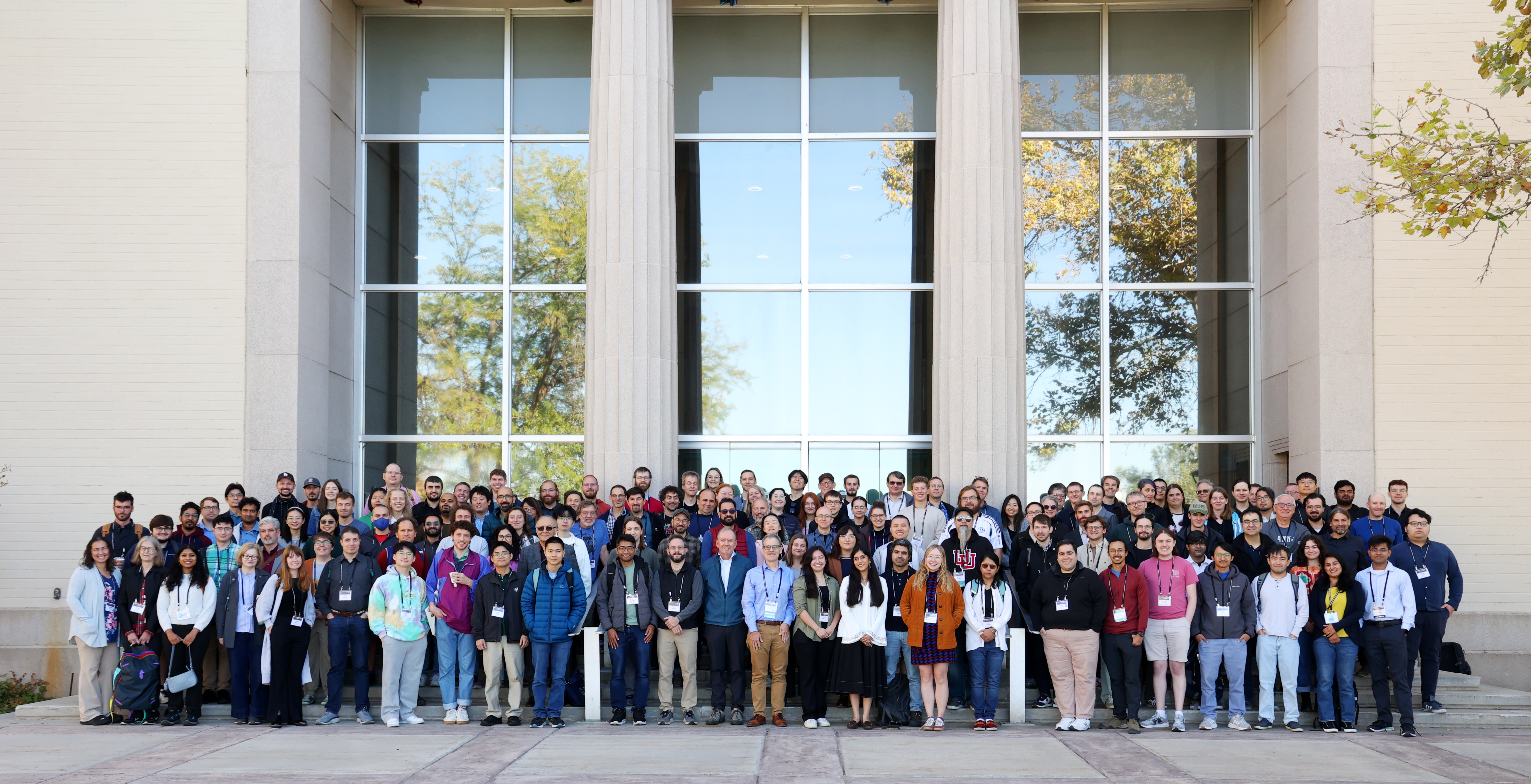
Earlier this month, more than 150 participants took part in the fall IceCube Collaboration meeting in Salt Lake City, Utah. The meeting was hosted by the University of Utah at the L.S. Skaggs Applied Science Building on campus.
The official meeting kicked off with opening remarks from University of Utah physics and astronomy department chair and IceCube collaborator Carsten Rott, who was also a co-chair of the local organizing committee. His remarks were followed by a welcome from Interim Dean of the College of Science Pearl Sandick and Senior Dean & Vice Provost Peter Trapa.

“We hosted the meeting at the newly completed Crocker Science Complex, located in the L.S. Skaggs Applied Science Building, the new home of the Department of Physics and Astronomy at the University of Utah,” says Rott. “Although the building had only been completed a few months earlier, the venue worked out extremely well. We received a lot of positive feedback highlighting the convenient layout of the conference rooms, the stunning views over the valley, and the outdoor patio that provided a perfect setting for coffee breaks.”

Later in the week, there were discussions and talks presenting activities and updates on the IceCube Upgrade, IceCube-Gen2, software, calibration, and education and outreach. The meeting also included presentations on results of the latest IceCube analyses, such as neutrino oscillations, neutrino sources, physics beyond the Standard Model, and cosmic rays.

Tours of the Utah IceCube group’s lab were offered during the meeting, and the collaboration meeting dinner was held at the Natural History Museum of Utah.
A highlight of the meeting was the U.S. premiere and screening of “Messengers,” an immersive documentary featuring IceCube and other particle physics experiments across the world. Following the screening was a Q&A session with Canadian film director Jeffrey Zablotny, former winterovers Connor Duffy and Kalvin Moschkau, Wisconsin IceCube Particle Astrophysics Center Director Dan Hooper, and Carsten Rott.

The week was also filled with plenty of activities and events for community building and fun, including a bouldering night, a board game night, and a tour of the Telescope Array, the largest cosmic ray detector in the Northern Hemisphere.
On the final day of the meeting, outgoing IceCube analysis coordinator Naoko Kurahashi Neilson gave reflections before passing the torch to Dennis Soldin, an assistant professor at the University of Utah who was also a member of the local organizing committee.

“A personal highlight for me was the appointment as the new IceCube analysis coordinator at the meeting, which is a great responsibility,” says Soldin. “It will be my honor serving in this role to maintain the high scientific standards of the collaboration in the future.”
“Organizing the meeting was an incredible experience. We had a good local organizing team, with different members taking on various aspects of the planning. It was especially rewarding to see our postdocs, graduate students, and many undergraduate students so enthusiastically engaged in helping make the meeting a success,” says Rott.
The next collaboration meeting will take place May 18-22, 2026, at the Ruhr-Universität Bochum in Bochum, Germany.